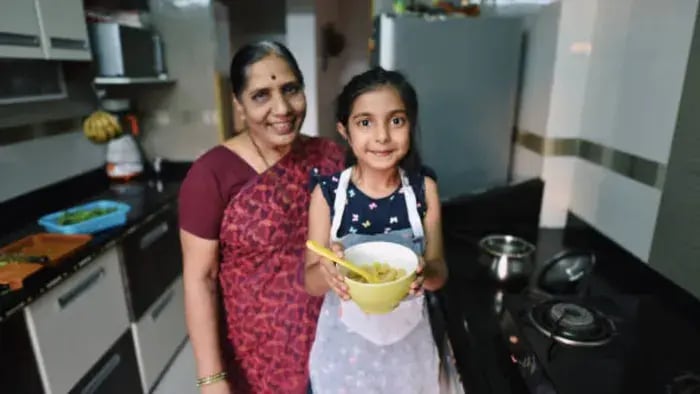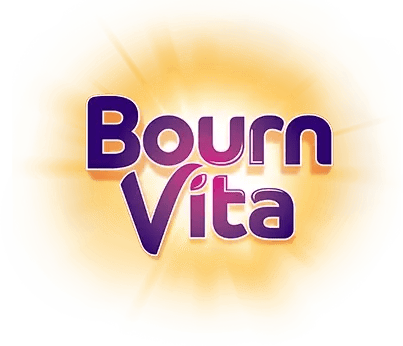- Start With a Protein-Packed Breakfast
- Include Pulses in Lunch
- Make Curd or Paneer a Daily Staple
- Use Roasted Chana & Peanuts for Smart Snacking
- Eggs or Sattu: Flexible, Filling & Fuss-Free
- Dinners That Don’t Skip Protein
- Smoothies That Do More Than Cool
Introduction
When kids are running around the playground, cycling after school, joining sports, or simply growing taller by the month, one nutrient works behind the scenes, protein. According to a study published in, Nat Rev Neurosci. 2010, For growing children and energetic teens, protein fuels brain power, supports bone development, helps repair tissues and keeps their energy levels steady throughout the day.

Many families, especially those following mostly vegetarian or mixed Indian diets, often wonder. Are the meals enough? Is dal enough? Do they need supplements? The good news is you can create a protein-rich diet for your child using everyday foods that are already in your kitchen. It’s about smart combinations, timing and variety.
From breakfast to dinner and those tricky snack times in between, this guide will help you make thoughtful protein protein-packed choices using familiar Indian foods. It’s about supporting their growth, focus, strength and overall wellbeing with every bite.
Fueling Growth: 7 High-Protein Diet Essentials for Energetic Kids & Teens

Active kids and teens need more than just full stomachs; they need meals that support movement, brainpower, and steady growth. Protein plays a starring role in this; it helps build muscle, repair tissues, and keeps energy levels balanced throughout a busy day. Here are seven practical and tasty ways to make that happen, using Indian foods you already know and trust.
Start With a Protein-Packed Breakfast
A good breakfast sets the tone for the day. Swap sugar-laden cereals for moong dal chilla, besan cheela with paneer filling, or stuffed soybean parathas. Pair them with curd or a small bowl of mixed nuts for added protein. According to the Dietary Guidelines for Indians, these traditional Indian breakfasts are rich in fiber and protein, contributing up to 20–25% of a child’s daily protein needs, perfect for long school mornings when energy and focus are essential.
Include Pulses in Lunch
Rajma, chana, moong, toor, or masoor, these dals are true heroes of everyday Indian meals. Serve them with brown rice, jowar roti, or parathas for a satisfying and protein-rich lunch. A side salad with sprouted moong or chana adds crunch and an extra boost of nutrients. As per a study published in, Public Health Nutr. 2012, a typical thali that includes dal, sabzi, roti, and curd can deliver around 30–35% of a growing child’s daily protein requirement, all through familiar foods.
Make Curd or Paneer a Daily Staple
According to a study published in, J Food Sci Technol. 2011, both curd and paneer offer a strong protein punch along with calcium. Curd cools the body, supports digestion, and pairs well with almost any meal or works great as a snack. Paneer can be stuffed into parathas, added to pulao, or lightly stir-fried with peas and capsicum. Homemade paneer bhurji or grilled tikkas also work well for school tiffins or as evening snacks. These dairy staples can easily provide 20–25% of daily protein when used consistently.
Use Roasted Chana & Peanuts for Smart Snacking
Skip the chips and packaged snacks, roasted chana, peanuts, or a homemade trail mix made with almonds, raisins, and sunflower seeds offer clean, lasting energy without the sugar crash. Study published in, J Food Sci Technol. 2015, these options are protein-rich and cost-effective, and can contribute around 15–20% of the day’s protein intake, especially helpful during school breaks or after sports.
Eggs or Sattu: Flexible, Filling & Fuss-Free
Study published in, J Acad Nutr Diet 2014, suggests for non-vegetarian households, eggs are an excellent source of complete protein and can be included as boiled, scrambled, or in omelettes. As per a study published in, J Food Sci Technol. 2019 for vegetarians, sattu, roasted Bengal gram flour, is a traditional ingredient that works beautifully in drinks, parathas, or even light porridges. Whether it’s an egg sandwich or a glass of sattu drink with jaggery, these foods can cover 20–25% of the daily protein requirement without much effort.
Dinners That Don’t Skip Protein
Dinner is often the most calming meal of the day, and it’s a great time to add that final protein boost. Vegetable khichdi made with dal and rice, tofu curry with millets, or egg curry with chapati can be both comforting and nourishing. Dal at night is especially helpful for recovery and muscle repair in active kids. According to the Dietary Guidelines for Indians, a balanced dinner like this can fulfill 30–35% of daily protein needs and ensure a restful, well-nourished night.
Smoothies That Do More Than Cool
Smoothies are a smart way to add protein for fussy eaters. A blend of banana, milk, and peanut butter, or curd with seasonal fruits and soaked almonds, can be both delicious and satisfying. Adding chia seeds, sattu, or dates increases the nutrient value without affecting the taste. Study published in, J Food Sci Technol. 2017, these quick drinks can pack in 20–25% of daily protein and work well for breakfast, evening snacks, or even light dinners.
Conclusion

Creating a high-protein diet is about being intentional with what you already make. Each dal you boil, nut you serve, or spoon of curd you offer adds to your child’s overall strength and wellness. When protein is part of everyday meals, not just gym diets, it supports a future where your child feels energetic, focused, and ready for everything life brings.
Her love for storytelling began with reading her grandfather’s speeches, where Tarishi saw the power of words in creating lasting memories. Combining her passions for food and writing, she has turned her life into a fulfilling path of sharing stories that celebrate flavours and how food brings communities together.
The views expressed are that of the expert alone.
The information provided in this content is for informational purposes only and should not be considered a substitute for professional medical advice, diagnosis, or treatment. Always seek the advice of your physician or another qualified healthcare provider before making any significant changes to your diet, exercise, or medication routines.
References
https://pmc.ncbi.nlm.nih.gov/articles/PMC5643802/
https://pmc.ncbi.nlm.nih.gov/articles/PMC7171006/
https://pmc.ncbi.nlm.nih.gov/articles/PMC4081456/
https://pmc.ncbi.nlm.nih.gov/articles/PMC4711439/
https://pmc.ncbi.nlm.nih.gov/articles/PMC3551056/
https://pmc.ncbi.nlm.nih.gov/articles/PMC3551056/
https://www.nin.res.in/downloads/DietaryGuidelinesforNINwebsite.pdf
















